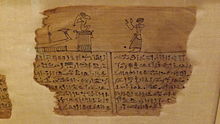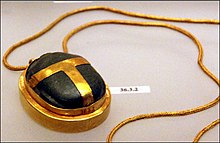(voice over & Introduction): The Universe exploded (Big Bang)
Care-in (quiet whisper as memory sounds): I watched in distance as the eye of the storm said with fragments flying past a sound that whir of what was a bound. Books of chapter the noise did ring and after every thing. The whaling.
Oh for the right did leave that path, I broke to where is a sat. No chair not even a branch for trees to swim the fragmented laugh. Just as that whir began to why old I thought to self that this is boom, a crane came to mind.
In flight of a thousand stars.
I looked up and there upon the loud I saw what is a shroud, a shade, no a dark space that lasted the length of no particle seat. In shock I said to self: Whaling? I cry not, the shout of sight for what is a whale on baby night but the mammal of.
Racing to the earths hems I turned left and awe ha moment in the ocean again.
What sea, the bounding waves, no fragment did the comment tear as what was that day in my life today but the ocean of this lands be gave. I province note to mapped and glad as here I am and that is true for just in the moment of I heard my son say "Or Ka"!! Yet there it is plain as sight with the eye of storm that night, an orca of course I said to self, is it not nice to be a bell? The smile gallant, the man a boy for the moment mice did subbed in story of this Earth I see as this story is the glory bee.
Ancient Egyptian concept of the soul
This article has multiple issues. Please help improve it or discuss these issues on the talk page. (Learn how and when to remove these template messages)
|
| Part of a series on |
| Ancient Egyptian religion |
|---|
 |
Fragment from Egyptian Book of the Dead
According to ancient Egyptian creation myths, the god Atum created the world out of chaos, utilizing his own magic (ḥkꜣ).[1] Because the earth was created with magic, Egyptians believed that the world was imbued with magic and so was every living thing upon it. When humans were created, that magic took the form of the soul, an eternal force which resided in and with every human being. The concept of the soul and the parts which encompass it has varied from the Old Kingdom to the New Kingdom, at times changing from one dynasty to another, from five parts to more. Most ancient Egyptian funerary texts reference numerous parts of the soul: the ẖt (physical body), the sꜥḥ (spiritual body), the rn (/ɾin/, Coptic ⲣⲁⲛ or ⲗⲉⲛ) "name, identity", the bꜣ "personality", the kꜣ (/kuʀ/) "double", the jb (/jib/, Coptic ⲉⲡ) "heart", the šwt "shadow", the sḫm "power, form", and the ꜣḫ (the combined spirits of a dead person that has successfully completed its transition to the afterlife).[2] Rosalie David, an Egyptologist at the University of Manchester, explains the many facets of the soul as follows:
The Egyptians believed that the human personality had many facets - a concept that was probably developed early in the Old Kingdom. In life, the person was a complete entity, but if he had led a virtuous life, he could also have access to a multiplicity of forms that could be used in the next world. In some instances, these forms could be employed to help those whom the deceased wished to support or, alternately, to take revenge on his enemies.[3]
Contents
ẖt (physical)
An ushabti box, Ptolemaic Period. On display at the Rosicrucian Egyptian Museum in San Jose, California. RC 623
Because the state of the body was tied so closely with the quality of the afterlife, by the time of the Middle Kingdom, not only were the burial chambers painted with depictions of favourite pastimes and great accomplishments of the dead, but there were also small figurines (ushabtis) of servants, slaves, and guards (and, in some cases beloved pets) included in the tombs, to serve the deceased in the afterlife.[6] However, an eternal existence in the afterlife was, by no means, assured.
Before a person could be judged by the gods, they had to be "awakened" through a series of funerary rites designed to reanimate their mummified remains in the afterlife. The main ceremony, the opening of the mouth ceremony, is best depicted within Pharaoh Sety I's tomb. All along the walls and statuary inside the tomb are reliefs and paintings of priests performing the sacred rituals and, below the painted images, the text of the liturgy for opening of the mouth can be found.[7] This ritual which, presumably, would have been performed during internment, was meant to reanimate each section of the body: brain, head, limbs, etc. so that the spiritual body would be able to move in the afterlife.
sꜥḥ (spiritual body)
Ostrakon with the beginning of the Ghost story. Terracotta from Deir el-Medina, 19th–20th Dynasties, New Kingdom of Egypt. Found by Ernesto Schiaparelli in 1905. Museo Egizio, S.6619.
What wicked thing have I done to thee that I should have come to this evil pass? What have I done to thee? But what thou hast done to me is to have laid hands on me although I had nothing wicked to thee. From the time I lived with thee as thy husband down to today, what have I done to thee that I need hide? When thou didst sicken of the illness which thou hadst, I caused a master-physician to be fetched…I spent eight months without eating and drinking like a man. I wept exceedingly together with my household in front of my street-quarter. I gave linen clothes to wrap thee and left no benefit undone that had to be performed for thee. And now, behold, I have spent three years alone without entering into a house, though it is not right that one like me should have to do it. This have I done for thy sake. But, behold, thou dost not know good from bad.[8]
jb (heart)
| jb (F34) "heart" in hieroglyphs |
|---|
This
exquisite gold and green stone heart scarab belonged to Hatnofer, the
mother of the prominent 18th dynasty state official Senenmut, who served
under the female king and pharaoh Hatshepsut. The tomb of Ramose and
Hatnofer was found intact by archaeologists at Sheikh Abd el-Qurna, in
Thebes. The scarab is today on display at the Metropolitan Museum of Art
In the Egyptian religion, the heart was the key to the afterlife. It was essential to surviving death in the nether world, where it gave evidence for, or against, its possessor. Like the physical body (ẖt), the heart was a necessary part of judgement in the afterlife and it was to be carefully preserved and stored within the mummified body with a heart scarab carefully secured to the body above it to prevent it from telling tales. According to the Text of the Book of Breathings,
[They drag Osiris in]to the Pool of Khonsu, ... and likewise [the Osirism Hor, justified] born of Taikhebyt, justified ... after he has grasped his heart. They bury ... the Book of Breathings which [Isis] made, which ... is written on both its inside and outside, (wrapped) in royal linen, and it is placed [under] the ... left arm near his heart.[11]It was thought that the heart was examined by Anubis and the deities during the Weighing of the Heart ceremony. If the heart weighed more than the feather of Maat, it was immediately consumed by the monster Ammit, and the soul became eternally restless.
kꜣ "double"
| kꜣ (D28) in hieroglyphs |
|---|
The Egyptians also believed that the kꜣ was sustained through food and drink. For this reason food and drink offerings were presented to the dead, although it was the kꜣw within the offerings that was consumed, not the physical aspect. In the Middle kingdom a form of offering tray known as a Soul house was developed to facilitate this.[12][13] The kꜣ was often represented in Egyptian iconography as a second image of the king, leading earlier works to attempt to translate kꜣ as double.
bꜣ (personality)
Bꜣ takes the form of a bird with a human head.
This golden bꜣ amulet from the Ptolemaic Kingdom would have been worn as an apotropaic device. Walters Art Museum, Baltimore.
| bꜣ (G29) in hieroglyphs |
|---|
| bꜣ (G53) in hieroglyphs |
|---|
In the Coffin Texts, one form of the bꜣ that comes into existence after death is corporeal—eating, drinking and copulating. Egyptologist Louis Vico Žabkar argues that the bꜣ is not merely a part of the person but is the person himself, unlike the soul in Greek, or late Judaic, Christian or Muslim thought. The idea of a purely immaterial existence was so foreign to Egyptian thought that when Christianity spread in Egypt, they borrowed the Greek word ψυχή psychē to describe the concept of soul instead of the term bꜣ. Žabkar concludes that so particular was the concept of the bꜣ to ancient Egyptian thought that it ought not to be translated but instead the concept be footnoted or parenthetically explained as one of the modes of existence for a person.[15]
In another mode of existence the bꜣ of the deceased is depicted in the Book of the Dead returning to the mummy and participating in life outside the tomb in non-corporeal form, echoing the solar theology of Ra uniting with Osiris each night.[16]
The word bꜣw (baw), plural of the word bꜣ, meant something similar to "impressiveness", "power", and "reputation", particularly of a deity. When a deity intervened in human affairs, it was said that the bꜣw of the deity were at work[17].
šwt (shadow)
A person's shadow or silhouette, šwt, is always present. Because of this, Egyptians surmised that a shadow contains something of the person it represents. Through this association, statues of people and deities were sometimes referred to as shadows.The shadow was also representative to Egyptians of a figure of death, or servant of Anubis, and was depicted graphically as a small human figure painted completely black. Sometimes people (usually pharaohs) had a shadow box in which part of their šwt was stored. [18]
sḫm (form)
Little is known about the Egyptian interpretation of this portion of the soul. Many scholars define sḫm as the living force or life-force of the soul which exists in the afterlife after all judgement has been passed. However, sḫm is also defined in a Book of the Dead as the "power" and as a place within which Horus and Osiris dwell in the underworld.[2]rn (name)
As a part of the soul, a person's rn (rn 'name') was given to them at birth and the Egyptians believed that it would live for as long as that name was spoken, which explains why efforts were made to protect it and the practice of placing it in numerous writings. It is a person's identity, their experiences, and their entire life's worth of memories. For example, part of the Book of Breathings, a derivative of the Book of the Dead, was a means to ensure the survival of the name. A cartouche (magical rope) often was used to surround the name and protect it. Conversely, the names of deceased enemies of the state, such as Akhenaten, were hacked out of monuments in a form of damnatio memoriae. Sometimes, however, they were removed in order to make room for the economical insertion of the name of a successor, without having to build another monument. The greater the number of places a name was used, the greater the possibility it would survive to be read and spoken.ꜣḫ
ꜣḫ glyph
It was associated with thought, but not as an action of the mind; rather, it was intellect as a living entity. The ꜣḫ also played a role in the afterlife. Following the death of the ẖt (physical body), the bꜣ and kꜣ were reunited to reanimate the ꜣḫ.[19] The reanimation of the ꜣḫ was only possible if the proper funeral rites were executed and followed by constant offerings. The ritual was termed s-ꜣḫ "make (a dead person) into an (living) ꜣḫ". In this sense, it even developed into a sort of ghost or roaming dead being (when the tomb was not in order any more) during the Twentieth Dynasty. An ꜣḫ could do either harm or good to persons still living, depending on the circumstances, causing e.g., nightmares, feelings of guilt, sickness, etc. It could be invoked by prayers or written letters left in the tomb's offering chapel also in order to help living family members, e.g., by intervening in disputes, by making an appeal to other dead persons or deities with any authority to influence things on earth for the better, but also to inflict punishments.
The separation of ꜣḫ and the unification of kꜣ and bꜣ were brought about after death by having the proper offerings made and knowing the proper, efficacious spell, but there was an attendant risk of dying again. Egyptian funerary literature (such as the Coffin Texts and the Book of the Dead) were intended to aid the deceased in "not dying a second time" and to aid in becoming an ꜣḫ.
Relationships
Ancient Egyptians believed that death occurs when a person's kꜣ leaves the body. Ceremonies conducted by priests after death, including the "opening of the mouth (wp r)", aimed not only to restore a person's physical abilities in death, but also to release a Ba's attachment to the body. This allowed the bꜣ to be united with the kꜣ in the afterlife, creating an entity known as an ꜣḫ.Egyptians conceived of an afterlife as quite similar to normal physical existence – but with a difference. The model for this new existence was the journey of the Sun. At night the Sun descended into the Duat or "underworld". Eventually the Sun meets the body of the mummified Osiris. Osiris and the Sun, re-energized by each other, rise to new life for another day. For the deceased, their body and their tomb were their personal Osiris and a personal Duat. For this reason they are often addressed as "Osiris". For this process to work, some sort of bodily preservation was required, to allow the bꜣ to return during the night, and to rise to new life in the morning. However, the complete ꜣḫs were also thought to appear as stars.[20] Until the Late Period, non-royal Egyptians did not expect to unite with the Sun deity, it being reserved for the royals.[21]
The Book of the Dead, the collection of spells which aided a person in the afterlife, had the Egyptian name of the Book of going forth by day. They helped people avoid the perils of the afterlife and also aided their existence, containing spells to ensure "not dying a second time in the underworld", and to "grant memory always" to a person. In the Egyptian religion it was possible to die in the afterlife and this death was permanent.
The tomb of Paheri, an Eighteenth dynasty nomarch of Nekhen, has an eloquent description of this existence, and is translated by James Peter Allen as:
Your life happening again, without your ba being kept away from your divine corpse, with your ba being together with the akh ... You shall emerge each day and return each evening. A lamp will be lit for you in the night until the sunlight shines forth on your breast. You shall be told: "Welcome, welcome, into this your house of the living!"[14]
Notes
- 26th Dynasty stela description Archived 2007-09-29 at the Wayback Machine from Kunsthistorisches Museum Vienna
References
- Egyptology online (2001), The concept of the afterlife, archived from the original on 2008-04-21, retrieved 2009-01-01
Further reading
- Allen, James Paul. 2001. "Ba". In The Oxford Encyclopedia of Ancient Egypt, edited by Donald Bruce Redford. Vol. 1 of 3 vols. Oxford, New York, and Cairo: Oxford University Press and The American University in Cairo Press. 161–162.
- Allen, James P. 2000. "Middle Egyptian: An Introduction to the Language and Culture of Hieroglyphs", Cambridge University Press.
- Borghouts, Joris Frans. 1982. "Divine Intervention in Ancient Egypt and Its Manifestation (b3w)". In Gleanings from Deir el-Medîna, edited by Robert Johannes Demarée and Jacobus Johannes Janssen. Egyptologische Uitgaven 1. Leiden: Nederlands Instituut voor het Nabije Oosten. 1–70.
- Borioni, Giacomo C. 2005. "Der Ka aus religionswissenschaftlicher Sicht", Veröffentlichungen der Institute für Afrikanistik und Ägyptologie der Universität Wien.
- Burroughs, William S. 1987. "The Western Lands", Viking Press. (fiction).
- Friedman, Florence Margaret Dunn. 1981. On the Meaning of Akh (3ḫ) in Egyptian Mortuary Texts. Doctoral dissertation; Waltham: Brandeis University, Department of Classical and Oriental Studies.
- ———. 2001. "Akh". In The Oxford Encyclopedia of Ancient Egypt, edited by Donald Bruce Redford. Vol. 1 of 3 vols. Oxford, New York, and Cairo: Oxford University Press and The American University in Cairo Press. 47–48.
- Žabkar, Louis Vico. 1968. A Study of the Ba Concept in Ancient Egyptian Texts. Studies in Ancient Oriental Civilization 34. Chicago: University of Chicago Press




















No comments:
Post a Comment